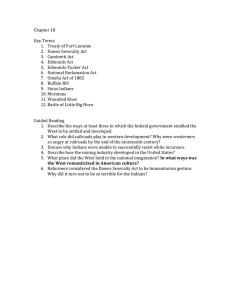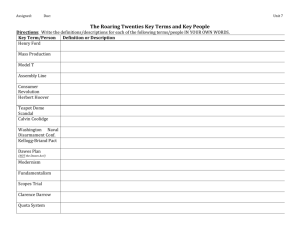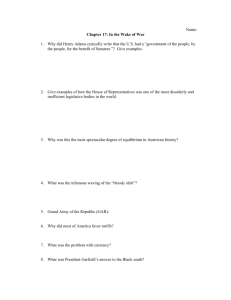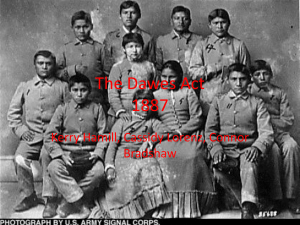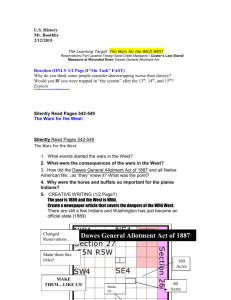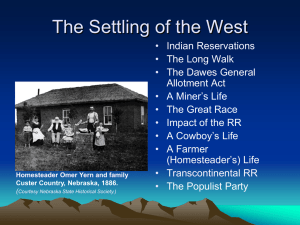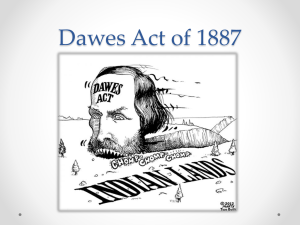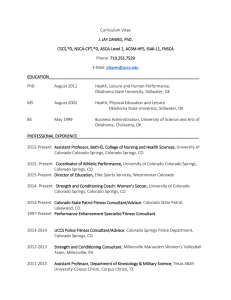The Dawes Act
advertisement
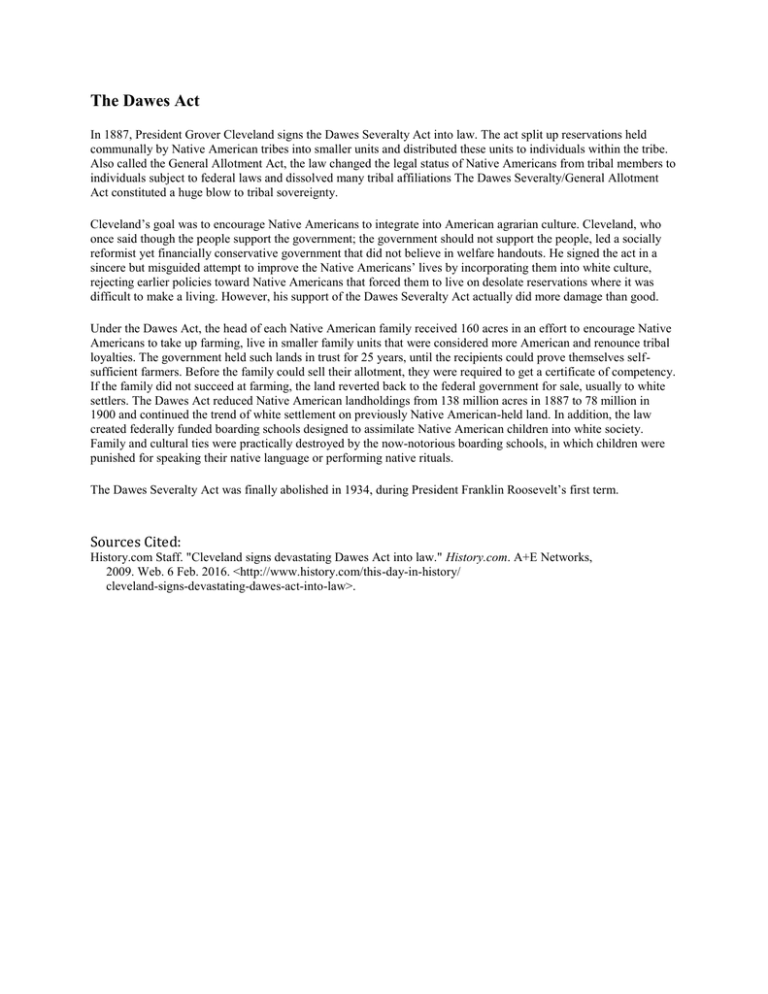
The Dawes Act In 1887, President Grover Cleveland signs the Dawes Severalty Act into law. The act split up reservations held communally by Native American tribes into smaller units and distributed these units to individuals within the tribe. Also called the General Allotment Act, the law changed the legal status of Native Americans from tribal members to individuals subject to federal laws and dissolved many tribal affiliations The Dawes Severalty/General Allotment Act constituted a huge blow to tribal sovereignty. Cleveland’s goal was to encourage Native Americans to integrate into American agrarian culture. Cleveland, who once said though the people support the government; the government should not support the people, led a socially reformist yet financially conservative government that did not believe in welfare handouts. He signed the act in a sincere but misguided attempt to improve the Native Americans’ lives by incorporating them into white culture, rejecting earlier policies toward Native Americans that forced them to live on desolate reservations where it was difficult to make a living. However, his support of the Dawes Severalty Act actually did more damage than good. Under the Dawes Act, the head of each Native American family received 160 acres in an effort to encourage Native Americans to take up farming, live in smaller family units that were considered more American and renounce tribal loyalties. The government held such lands in trust for 25 years, until the recipients could prove themselves selfsufficient farmers. Before the family could sell their allotment, they were required to get a certificate of competency. If the family did not succeed at farming, the land reverted back to the federal government for sale, usually to white settlers. The Dawes Act reduced Native American landholdings from 138 million acres in 1887 to 78 million in 1900 and continued the trend of white settlement on previously Native American-held land. In addition, the law created federally funded boarding schools designed to assimilate Native American children into white society. Family and cultural ties were practically destroyed by the now-notorious boarding schools, in which children were punished for speaking their native language or performing native rituals. The Dawes Severalty Act was finally abolished in 1934, during President Franklin Roosevelt’s first term. Sources Cited: History.com Staff. "Cleveland signs devastating Dawes Act into law." History.com. A+E Networks, 2009. Web. 6 Feb. 2016. <http://www.history.com/this-day-in-history/ cleveland-signs-devastating-dawes-act-into-law>.
